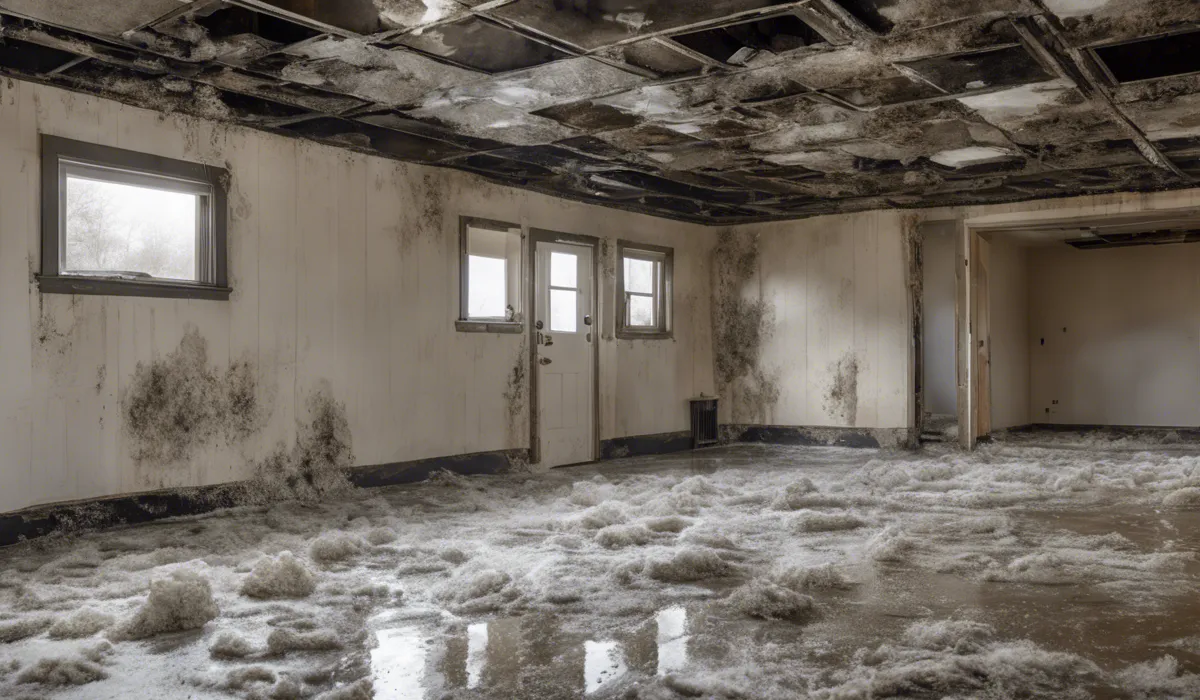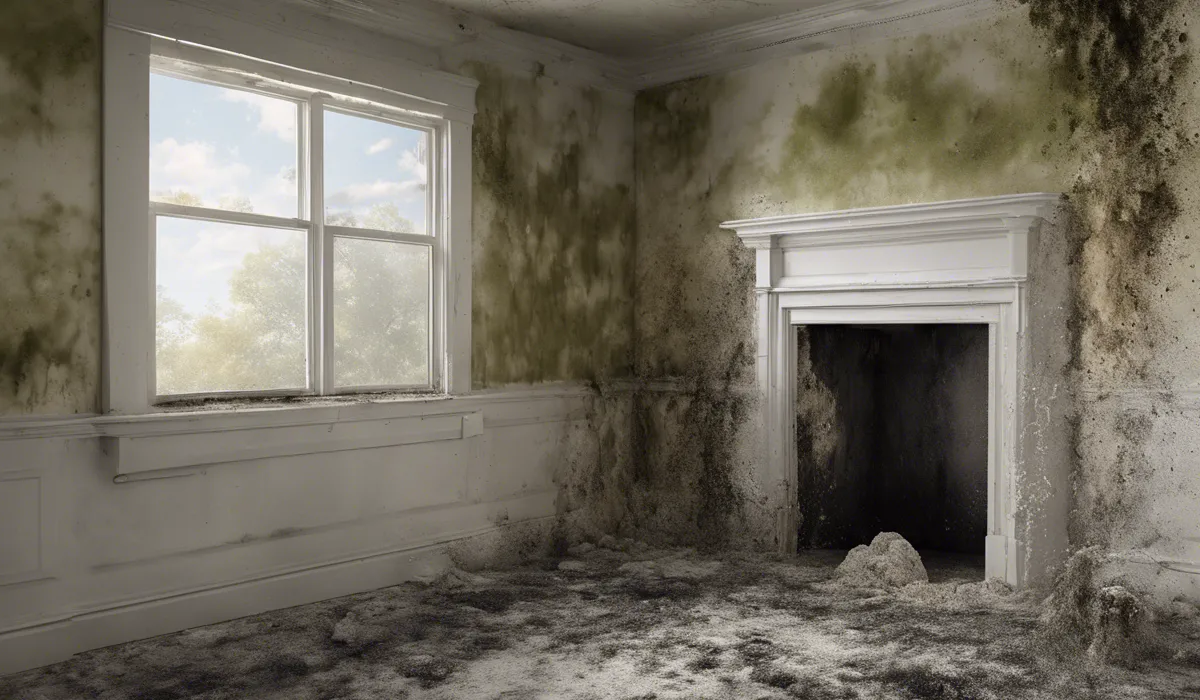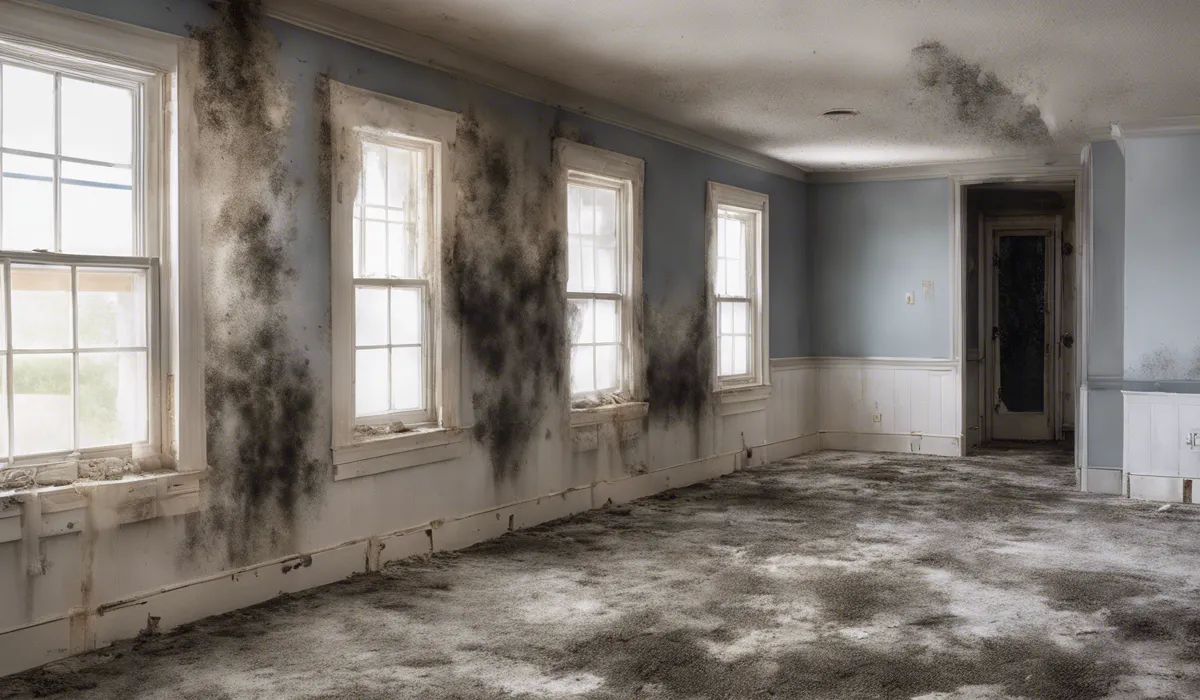Mold remediation can be dangerous due to exposure to toxic spores and harsh chemicals.
Professionals use protective gear to mitigate risks. It’s crucial to ensure proper ventilation and follow safety protocols during the process to prevent health hazards.
Understanding Mold and the Remediation Process

What is Mold?
Mold is a type of fungus that can grow indoors and outdoors, thriving in damp, warm, and humid environments.
It reproduces through tiny spores that travel through the air. These spores can land on surfaces and, given the right conditions, can grow into mold colonies.
Some common types of mold found in homes include Cladosporium, Penicillium, Aspergillus, and the infamous black mold, Stachybotrys chartarum.
Health Risks of Mold
Mold exposure can cause a variety of health issues, especially in people with allergies, asthma, or compromised immune systems.
Symptoms of mold exposure can include coughing, sneezing, sore throat, skin irritation, and more severe reactions like difficulty breathing and lung infections.
Some molds produce mycotoxins, which can be particularly harmful to human health.
Mold Remediation Steps
Mold remediation involves several steps to ensure the safe and complete removal of mold from an affected area.
First, professionals conduct an inspection to assess the extent of the mold growth. Next, they contain the area to prevent the spread of spores.
The team then removes mold-infested materials, cleans and disinfects the area, and finally restores the space to its original condition.
Throughout the process, air filtration helps to capture airborne mold spores.
Why Professional Services are Essential?
Professional mold remediation services are crucial due to the complexities of mold removal.
Trained experts understand how to handle mold safely, use the appropriate equipment, and follow guidelines to prevent mold from returning.
They also have the capability to address hidden mold, which can be missed by non-professionals, ensuring a thorough cleanup.
Potential Dangers of Mold Remediation

Risk of Mold Spore Exposure
During mold removal, spores can become airborne and pose a risk to those in the vicinity. Inhaling these spores can lead to health problems, particularly for individuals with respiratory conditions.
This risk underscores the need for proper safety gear and containment measures during the remediation process.
Dangers of Cross-Contamination
Improper handling of materials affected by mold can lead to cross-contamination, where mold spreads to previously unaffected areas.
This can result in a larger infestation and greater difficulty in completely eradicating the mold. Strict protocols must be followed to prevent this scenario.
Hazardous Chemicals in Remediation
Some chemicals used in mold remediation are hazardous to human health. These chemicals must be handled with care to avoid exposure, which can cause irritation or more serious health issues.
Professionals are trained to use these chemicals safely and effectively.
Physical Risks from Demolition
When mold has penetrated deep into building materials, some level of demolition may be necessary.
This process can create physical risks, such as falling debris or structural instability. Professionals are equipped to manage these risks and perform demolition safely.
Safety Measures and Best Practices in Mold Remediation

Using Personal Protective Equipment
For those working on mold remediation, Personal Protective Equipment (PPE) is essential.
This includes masks or respirators, gloves, goggles, and protective clothing. PPE helps to protect workers from inhaling spores and from skin contact with mold and chemicals.
Containment and Ventilation Strategies
Proper containment is vital to prevent mold from spreading during remediation. This involves sealing off the affected area with plastic sheeting and using negative air pressure to keep spores contained.
Ventilation techniques are also crucial to remove mold spores from the air and ensure a safe environment for both workers and building occupants.
Adhering to EPA and IICRC Guidelines
The Environmental Protection Agency (EPA) and the Institute of Inspection, Cleaning and Restoration Certification (IICRC) provide guidelines for safe mold remediation.
These guidelines cover how to assess mold problems, protective measures for workers, and best practices for cleaning and restoration. Following these guidelines helps ensure that mold removal is effective and safe.
The Role of Certified Professionals
Certified professionals bring expertise and experience to mold remediation tasks. Their training in safety protocols, proper equipment use, and up-to-date techniques ensures that mold is removed effectively while minimizing health risks.
Hiring certified professionals is an investment in the safety and well-being of building occupants.
FAQs About Mold Remediation Dangers
Is mold remediation a dangerous process?
Mold remediation can be dangerous due to the potential exposure to toxic mold spores and the use of harsh chemicals, which is why it is often best left to professionals.
What are the risks of DIY mold remediation?
DIY mold remediation can pose health risks from inhaling toxic spores and improper use of chemicals, as well as the risk of incomplete removal leading to further mold growth.
What protective gear is necessary for mold remediation?
Professional mold remediators wear protective gear such as N-95 respirators, gloves, goggles, and full-body suits to protect against mold spore exposure.
How is safety ensured during professional mold remediation?
Safety during professional mold remediation is ensured by following strict protocols, which include sealing off the affected area, using proper ventilation, and wearing appropriate protective equipment.
Can mold remediation prevent future health hazards?
Yes, proper mold remediation removes the source of toxic spores, thus preventing potential health hazards associated with mold exposure.
Final Thoughts
Mold remediation presents risks due to toxic spore exposure and the use of harsh chemicals. To safeguard against health hazards, professionals employ protective gear and ensure proper ventilation.
Adherence to safety protocols is essential throughout the remediation process to protect both the workers and the inhabitants of the affected environment.
